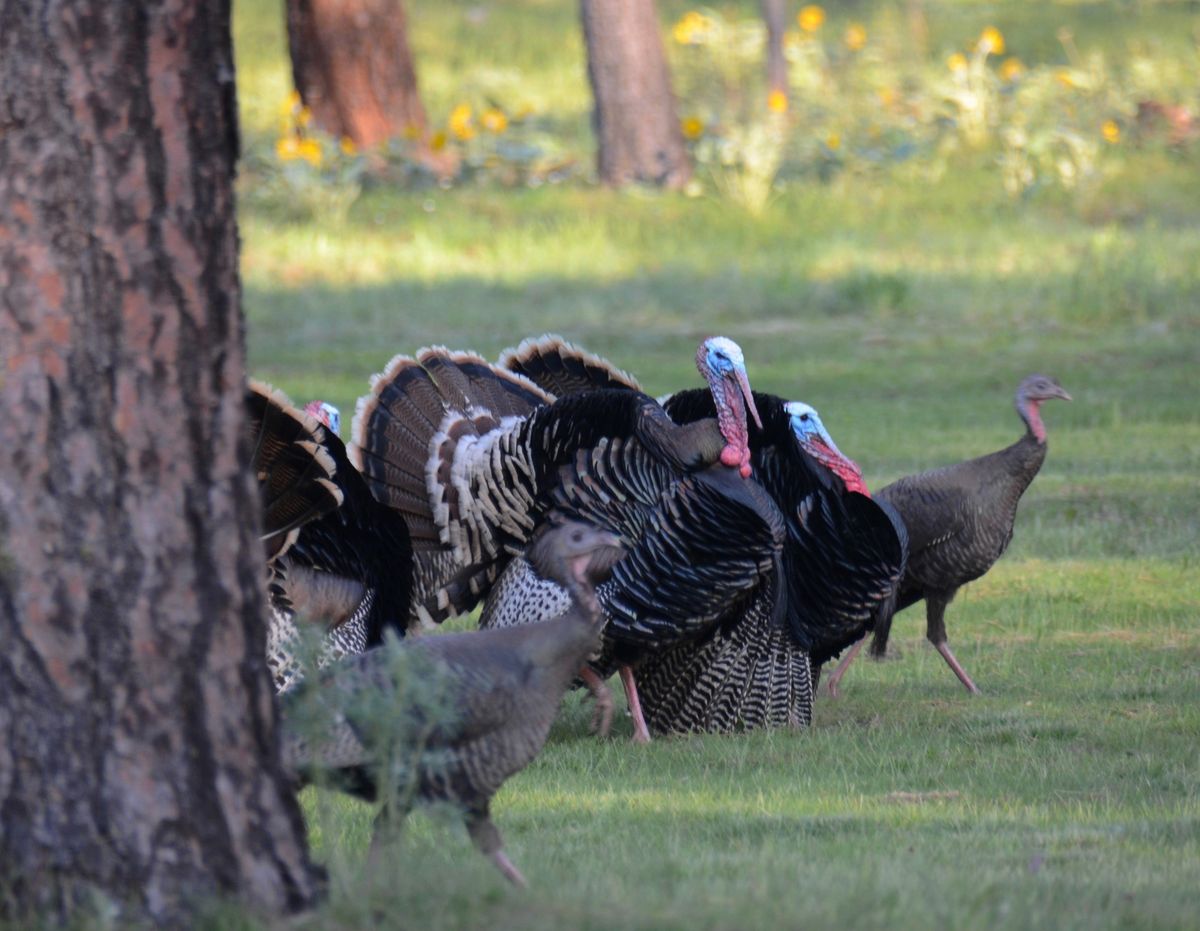Prime time for toms: Best hunting for gobblers may be after opening day

Suppose you know of a turkey hunter who hasn’t bagged a tom since the spring gobbler season opened on April 15.
We won’t mention names to avoid the inevitable barrage of ridicule. Nonhunters gleefully point out that one could easily sit in their driveways in Spokane and bag a turkey from the rafters that nonchalantly roam city streets and neighborhoods. Hah-hah.
Meanwhile, just between us hunters (who are saving the world by keeping turkey numbers in check), pursuing wild turkeys in their natural habitat is much more challenging than the average city dweller can imagine.
Gobblers and hens – the kind that live in the wild – are extremely wary and capable of using keen hearing and eyesight to make even an experienced hunter occasionally look like a rookie.
Calling in a tom from a distance into range of a shotgun or bow is an exciting challenge.
With turkeys widespread on public and private land, the spring season is a favorite opportunity to introduce new hunters to success. Hunters suffering from spring fever champ at the bit to don their camo and talk turkey.
But opening weekend may be overrated as the prime time a hunter should focus on gobblers. There may be more toms available than later in the season, but there also are more hunters in the field.
And even if you have a competition-free private place to hunt, early-season toms can be tied to groups of hens and tough to call into range.
“I hunt opening day, often with friends, but I enjoy hunting the later part of season, especially midweek, when the crowds go away and the birds are acting more natural,” said Bart George, wildlife biologist with the Kalispel Tribe and avid hunter.
After the opening weekend, more bred hens start laying their eggs. They do this one egg a day for six to 10 days.
“It’s almost impossible to call toms away from a flock in the early season,” George said. “But later, in the middle of the day when the hens are on their nest laying or sitting, the toms become way more receptive to being called.”
As we head toward the middle portion of Eastern Washington’s spring season, which ends May 31, George said he shifts his emphasis from hunting first thing in the morning.
“I put a lot more energy into traveling, locating and trying to get the midday bird,” he said.
In the early season, with the longbeards glued to the flocks, George leans toward soft yelps to lure the hens his way with the gobblers in tow.
“As the season goes on, I transition to traveling, doing a lot more walking, occasionally using loud yelps to get a gobbler to answer and reveal its location,” said George, a member of Backcountry Hunters and Anglers.
“At that point, you can set up and you have a better chance of calling it in whether it’s by itself or with another tom.”
The terrain he hunts also changes as the season advances.
“Our turkeys early in the season generally are at lower elevations and valley bottoms closely tied to ag operations like cattle or hay farms,” he said.
“As the season goes on, they move up. I have a lot more success hunting them on ridges and their strut zones in open parks. I don’t have much success down in the thickets where you can’t see across.”
Before the end of the season, there’s a sweet week or 10 days of hunting around the first week of May. This is when most of the hens are focused on nesting while gobblers still are cruising around with surging hormones.
They’re particularly undistracted and vulnerable to calling at this time.
Asked what he sees as the most common mistake unsuccessful turkey hunters make, George said, “Not being out there.”
“I heard it again during opening week: people back in their truck by 9 a.m. saying the turkeys were really gobbling early in the morning, but then they shut up so they left. My experience is that all gobblers go quiet for a period, but they’re still out there. They’re probably going to fire up again.
“Even if one or more gobblers have gone a ways away with some hens, make yourself comfortable and stay in the area. They can cover a lot of country without really leaving.
“Eventually, they’ll split up and the gobblers will remember where they heard your earlier calls and they’re likely to come back.”
George’s main point is inarguable: “Your chances of connecting with a gobbler are a lot better if you’re out there than if you’re back having coffee.”
That is, unless you run over one in your driveway.